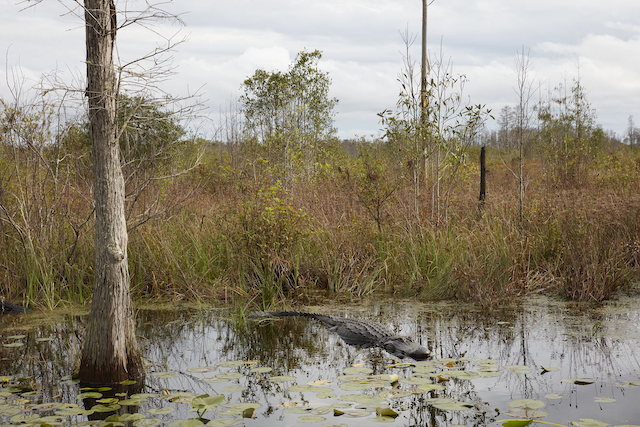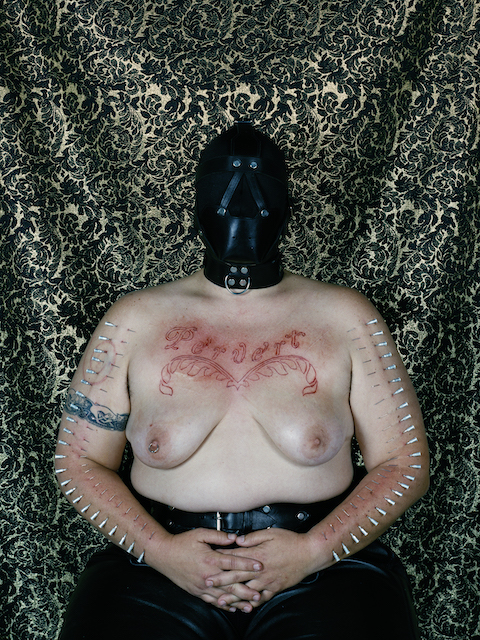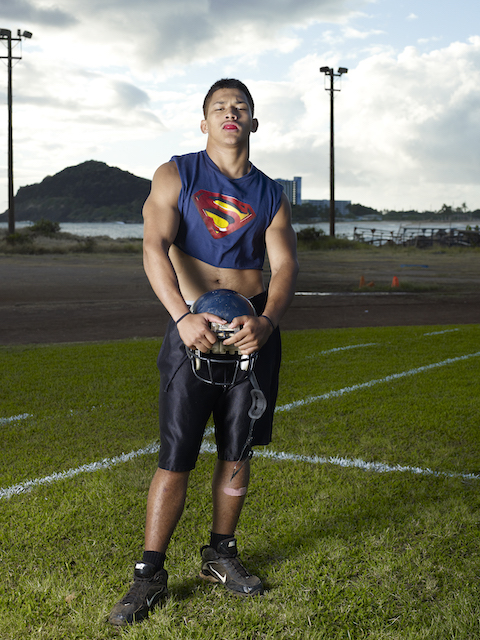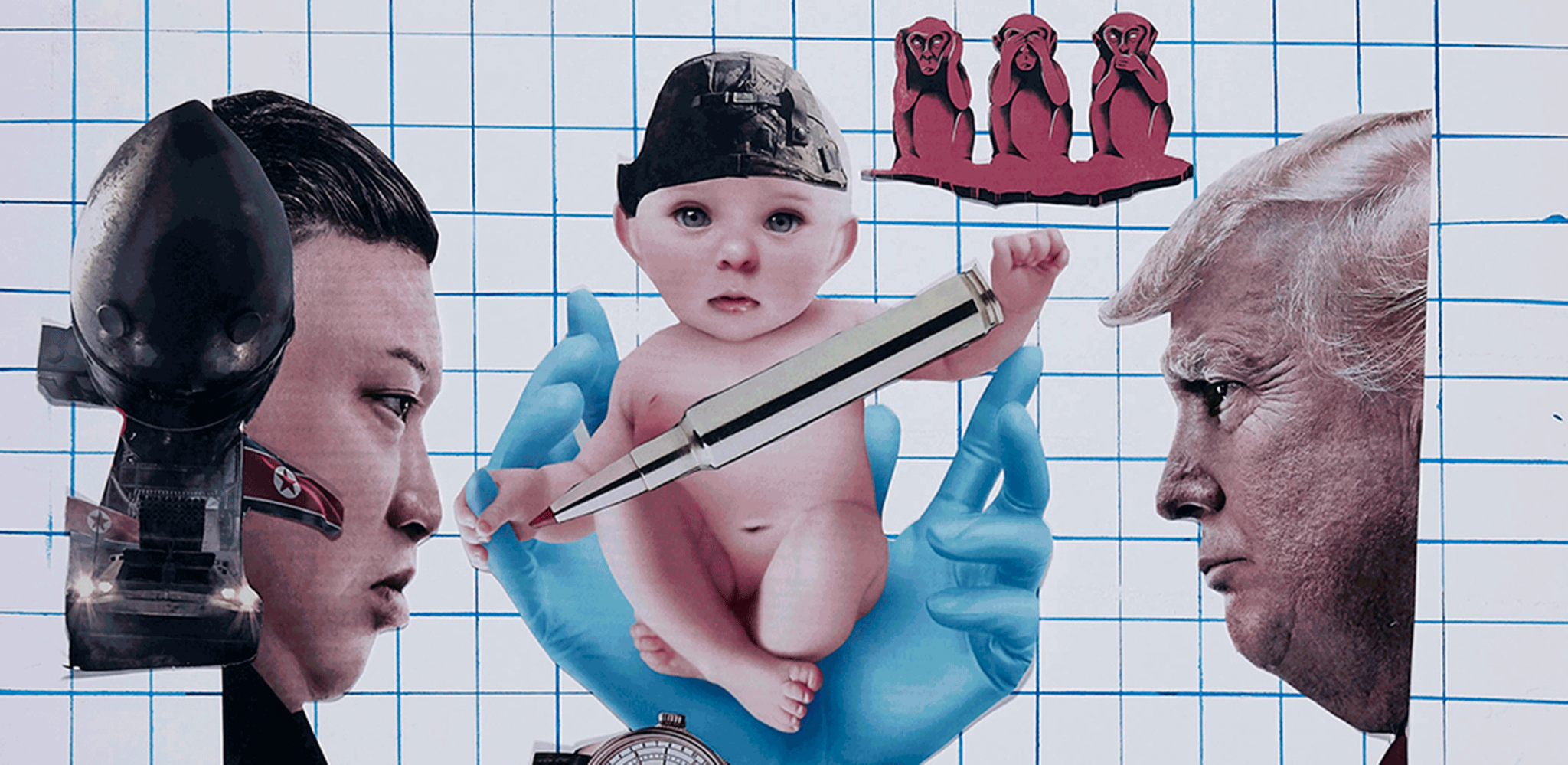“I believe in bearing witness in the simplest way”
American photographer and artist Catherine Opie has spent more than three decades exploring identity – what it means, how it’s represented – across numerous bodies of work and subjects that range from queer identity (the 1991 series Being and Having, for which Opie photographed herself and her queer female friends performing masculinity, launched her career) to urban and natural landscapes, to temporary communities, politics and iconographic critique.
Opie’s start as a photographer came at the age of nine, when she picked up her first camera (a Kodak Instamatic) and, having completed a book report on child labour for which she took inspiration from Lewis Hine’s early-twentieth-century series on child factory workers (he was made the official photographer for the National Child Labor Committee in 1908), promptly told her parents that she wanted to become a documentary photographer. “I realised that a photograph could literally have this power to, not necessarily create social change (because I’m not that idealistic), but I think it’s important to create social change if even one’s own community can recognise themselves within the work later on,” Opie tells me, when we meet in London on the morning of the Barbican’s Masculinities opening, in which her series Being and Having and High School Football (2007–09) are included. She goes on to cite Robert Frank, Karlheinz Weinberger, Wilhelm von Gloeden and Julia Margaret Cameron as influences. “I was able to grow up with the great kind of pictorial magazines like Life and National Geographic,” she continues. “So as a kid, for me that was always the way a story began to be told.”
In her most recent series, on show (although affected by closures related to the current COVID-19 pandemic) at Regen Projects in LA, Opie returns to that early inspiration of mid-century print culture. Rhetorical Landscapes comprises nine largescale landscape photographs of the Okefenokee Swamp in Georgia and eight stop-motion animations (all untitled, 2019) shown on giant kiosk screens, styled like smartphones. These last feature a compilation of images cut and collected from magazines and newspapers since the 2016 US presidential election campaign that build up into a collage. “In this day and age where we’re on an iPhone, scrolling through the news, the very validity of photography is called into question,” the artist says. “Everyone’s asking, ‘Aren’t there too many images now, Cathy?’ Well, there’s too much of everything, but it’s about how you decide to disseminate that information. That’s what’s interesting to me – this idea of criticality.” The resulting conflation of cuttings from print media made into political collages, with technology that allows us to access a constant stream of news, brings into focus the highly edited nature of the information we receive.
She goes on to describe how the contemporary political climate, the post-truth era and the way in which society is fed information has led her to make the connection between print culture and the US’s wetlands, both of which are ecosystems vital to preserving, say, independent thought, or keystone species of a particular environment, but which are nevertheless under threat. That Opie includes wetlands in the series is no coincidence given that in American political discourse swamps have represented bureaucratic quagmire, a sentiment popularised during the 1980s and one often referenced by Trump’s borrowed line ‘to drain the swamp’ of federal government (not forgetting his attacks against news outlets that don’t conform to the current government’s ideology by calling them ‘fake news media’).
Despite the fact that Okefenokee Swamp is a protected area, conservationist groups are currently fighting off proposals by heavy mineral mining company Twin Pines, whose project along the eastern border of the wildlife refuge threatens to literally drain the swamp. Opie’s inclusion of the wetlands points to the idea that although they are an icon of that region, they are omitted from the stereotypical visual rhetoric of well-known national sites like Yosemite National Park (the first site to be officially recognised, in 1872, a decision influenced by the photos of Carleton Watkins, later extensively photographed by National Park advocate Ansel Adams and which were also a subject of Opie’s 2018 Hong Kong exhibition, So long as they are wild) that picture the US landscape as a symbol of Manifest Destiny. Most of the 62 listed parks are located in the Western US, and just two are swamps. Opie presents the swamps as quiet, lush and verdant. They are photographed from the wetland’s waterways: natural paths that allow visitors to pass through the ecosystem but also reinforce its impenetrability, reflected here in the opaque, glassy black water.

By contrast, the animations are transparent in their politics and – inspired by Terry Gilliam’s stop-motion animations for Monty Python – address subjects ranging from the US’s prejudiced treatment of minorities, the resurgence of white supremacy, partisan politics, gun laws and extreme patriotism, to the environmental crisis and impact of industrial development. They do this, however, with a dose of humour and absurdity: on one screen an ice cream cone falls on the heads of a group of white supremacists; guns fall from the top of another screen and pile up into a mountain of weapons; and skyscrapers bob around amid magazine cuttings of waterscapes, while supporters of Trump’s wall ‘drown’ in a corner and a baby seal peers out from the middle of the flood, the scene topped with a beach umbrella. The irony now, of course, is that nature seems to be getting on with its business while humanity struggles.
Does criticality in these images, then, also lie in the issue of visibility? To make something visible is to acknowledge its existence – whether the subject is the environment, or politics, or human communities. So how does Opie navigate the tension between the seen and unseen? How does she operate her camera in a way that makes the invisible visible, without imposing onto the subject a specific meaning, or category, or stereotype? Opie doesn’t mention it explicitly when we speak, but there’s an underlying sense throughout her series that in order to make her subjects visible in a way that debunks the stereotype, she perverts existing and normative understandings of them. In doing so, this has allowed Opie room to manoeuvre between wide-ranging subject matters – whether she takes images from print out of context to create political collages, or portrays specific communities of people while manipulating the kinds of art-historical tropes designed to prescribe an individual’s status, and one that has long held a hegemony over the way we understand and view Western society.
“I believe in bearing witness in the simplest way photography does,” she says, and something about this answer makes me realise that the same drive behind her childhood project on Hine’s photographs exists in all of her work. It’s not just about making social issues and communities visible – it’s about doing it with empathy and in such a way that people can recognise their own communities.
Being and Having, first shown in New York, is made up of 13 closeup portraits featuring Opie and her lesbian friends wearing fake moustaches, sporting ‘tough-guy’ stares, and photographed against a bright, warm yellow backdrop (a visual device inspired by Hans Holbein the Younger): as a minority of the leather subculture, which was at the time dominated by men, they perform a version of extreme masculinity. Each photo is accompanied by a small metal plaque engraved with nicknames like ‘Chicken’, ‘Oso Bad’, ‘Pig Pen’, ‘Chief’, and Opie as ‘Bo’ (her alter ego as ‘a serial killer from the Midwest who’s a used aluminium-siding salesman’ was an early example of her interest in the role stereotypes play as much in the construction of personal identity as in the way judgements are formed). The series was made at a time when the AIDS epidemic had had a profound impact on the LGBTQ community – one that predominantly affected gay and bisexual men, and trans women: by 1995, one in 15 gay men in the US had died of an AIDS-related illness. It was also shown the year after queer theorist Judith Butler had published Gender Trouble (1990), in which the notion of gender as a performance entered academic, and then wider social discourse.
“In the early 90s, you didn’t see portraits being constructed in that way. There’s seduction in those portraits and that came from my own desire in relation to the leather community. It was a community that was really fun to be in and party with, and go to clubs where our bodies pressed against each other – and even though we were in an epidemic, there was an ability for us to feel cohesive and political within our visibility – there was a hotness to it,” she says. “Even for myself it was a radical move: I’m proud that I was brave enough to be out myself at that time period, and that I was able to confront all the fears around it in terms of my own internal homophobia.”
Having grown up in a conservative household and having experienced childhood abuse, Opie views the opportunity to explore her sexuality within a supportive community built on its members’ shared empathy with one another as allowing her to reconcile not only her own homosexuality in relation to her career but also to delve into the multifaceted nature of desire and how that’s bound up with the notion of identity.

The Self-Portraits are a series of three photographs, Cutting (1993), Pervert (1994) and Nursing (2004), all set against a cloth backdrop of richly coloured brocadelike material. In Cutting, Opie’s naked back is turned to the viewer. She faces a dark teal cloth printed with stylised cloth bowls of fruit. Scratched into her back is a crude, childlike drawing of two women holding hands outside a house; a sun is peeping out from behind a cloud and two birds soar in parallel. Beads of blood pool in the sun’s rays, or drip from the chimney. The drawing speaks to the kind of idealised life that a child might imagine, cutesy and happy, with sunshine. Opie cuts herself again in Pervert. Her face is hidden behind a gimp mask, each arm pierced from wrist to shoulder with a row of needles, the same ones used to carve out the word ‘Pervert’ in neat elegant script across her bare chest. She sits, as if patiently waiting, in front of a black and gold brocade curtain. And in Nursing, Opie is photographed breastfeeding her baby son; their gazes meet across the now pearly-thin scar on her chest, framed by red and gold drapery.
We talk about how people have reacted to these photos. “In different interviews, one question I have had a lot is, ‘Why did you mutilate yourself?’ I’ve always had a big problem with that terminology. People attach psychological issues onto those self-portraits. I always found that very off-putting and surprising, because this was a very specifically performed identity on my body in relationship to queer culture. You have to constantly remind people and reframe those images to a certain extent,” she says, and goes on to explain that the carving of ‘pervert’ was in reaction to how her own subcommunity of leather and S/M friends were viewed and othered by the wider LGBTQ community at the time.
Historically, visual symbolism in portraiture has played a role in building an identity, or narrative, for the sitter. Everything from the objects and materials that surrounded the subject to the clothes and demeanour of the sitter would describe their worldly position. In Italian and Northern European Renaissance portraiture, brocade, for example, a labour-intensive, dyed, woven silk fabric that was introduced via Venice from Byzantium in the fifteenth century, came to symbolise a certain kind of social status: only the wealthy and the nobility were able to afford such a costly material, and consequently the fabric maintained a long status as a material that denoted a particular, aspirational class-structure. The material, used as a backdrop to frame Self-Portraits, both functioned to elevate and make visible the queer experience within a dominantly heteronormative society, and at the same time challenged ideas of what was ‘socially acceptable’ identity. The latter is perhaps more evident when a comparison is drawn between, for example, Domenico Ghirlandaio’s 1488 painting Giovanna Tornabuoni nee Albizzi, in which the initial and emblem of the sitter’s husband and his family are embroidered onto the shoulder of her clothing, and Pervert, where that form of insignia is replaced with the needles that identify Opie within the S/M family. What’s more, the holding back of visibility, by the gimp mask worn by Opie, is offset not only by her naked torso and its inscription, but by the protective positioning of her hands clasped over her womb – a gesture symbolic of fertility or pregnancy in Renaissance painting, and in this context, one that challenged the assumption that lesbians in the S/M community couldn’t also be, or hope to be mothers. A decade later, she photographed Nursing.
“Using art history as a reference is actually a way of figuring out how to be transgressive within your work while at the same hooking people into a language. For example, if I went into a documentary mode of photography in the 90s and took pictures of my friends in their rooms, those photos would be in a very specific position within that history of photography. But what does it mean to use a history of painting to look at a subject that is viewed as ‘transgressive’ or ‘dangerous’? Referencing art history is a way of bringing the viewer in and getting them to look at the subject in a different way – or to be seduced even. My early subjects are thought of as abject or transgressive, but my photographic handling of them utterly does not do that.”

That empathetic approach to framing her subjects, as well as her long-held interest in debunking cultural stereotypes, led Opie to explore other communities in series like Surfers (2003) and High School Football (2007–09). In the latter, teenage boys pose for portraits in their uniforms – a symbol of American hypermasculinity – or else appear in landscapes of games in play. Here, Opie captures something beneath the surface of this gendered performance, one that is designed to conceal emotions or individuality: insecurity and awkwardness bely their stoic expressions. “High school footballers might have scared the shit out of me when I was in high school, because I was a chubby tomboy who wore glasses and was teased constantly by that group of boys. But that doesn’t mean that I go back and make photographs that are pushing this heightened sense of masculinity. No, I bear witness to who they are and who they stand before me. That has to count for something, because if we were constantly going off these stereotypes, how can we see people in any other way beyond that?”
To image something over and again makes it more digestible to the public – so that subjects that are typically regarded as taboo are ‘normalised’. That’s what Susan Sontag says in the oft-quoted On Photography (1977). But she also reminds us that there are consequences to complete visibility: the risk of making the subject so ubiquitous that viewers can no longer empathise with it. Opie evades this in her work by putting into tension the relationship between the invisible and visible, knowing precisely what to reveal in order to hook a viewer in, and what to conceal in order to get the viewer to linger on her photographs, and enter into a visual discourse with her subject, from her recent politically focused work, to her social documentary of her own community and others of which she is not a part – all the while fostering a sense of empathy and human connection.
In the landscapes of Icehouses (2001) and Surfers, the horizon line fades so that land or sea becomes sky, interrupted only by the presence of tiny temporary fishing huts set up on the lake ice or the silhouettes of surfers waiting for the waves. Everything is going on underneath – you just can’t see it.
From the April 2020 issue of ArtReview
